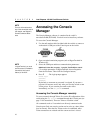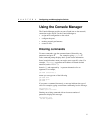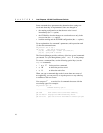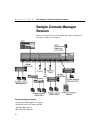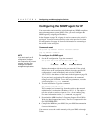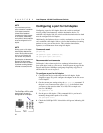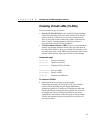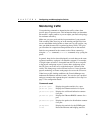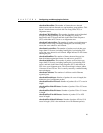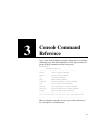
23
Configuring and Managing the Switch
CHAPTER 2
Creating Virtual LANs (VLANs)
You can create two types of VLANs:
• Security VLANs (SVLANs). Ports in an SVLAN can exchange
frames only with other ports in the same SVLAN. SVLANs are
used for security to prevent access to devices on the network.
They’re also used to reduce unnecessary traffic on the network
since all traffic, including broadcast and unicast frames, is
prevented from crossing SVLAN boundaries.
• Virtual Broadcast Domains (VBDs). Ports in a virtual broadcast
domain can exchange broadcast frames only with other ports in
the same VBD. However, they can exchange unicast frames with
any other port on the switch. VBDs reduce broadcast traffic on the
network, while allowing other types of traffic to pass through.
Commands used
set-sec-vlan
Sets up an SVLAN.
del-sec-vlan
Deletes an SVLAN.
get-svlan-tbl
Displays the SVLAN table.
set-vbc-domain
Sets up a VBD.
del-vbc-domain
Deletes a VBD.
get-vbc-tbl
Displays the VBD table.
To create an SVLAN
1 Determine the ports you want to group together.
In the diagram on page 20, the file server on port 5 contains
sensitive information that only the Payroll and Finance
workgroups should see. Creating an SVLAN that includes the
Payroll and Finance workgroups along with the file server will
accomplish this. However, Payroll and Finance still need to
communicate with stations on the other ports. Creating another
SVLAN that includes all ports except the file server port will
solve this problem.




